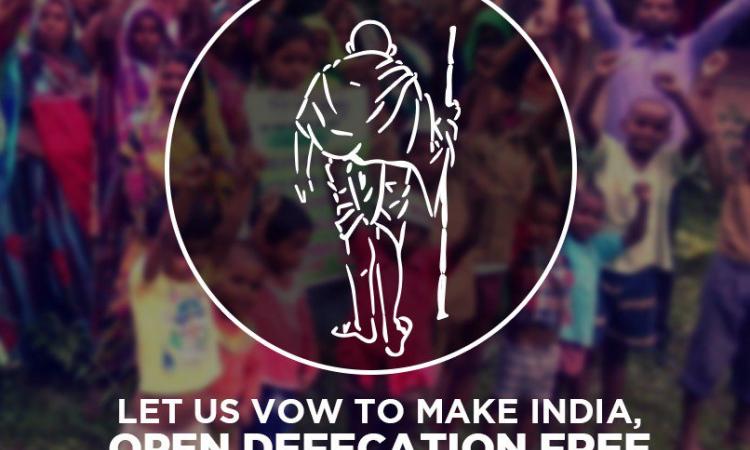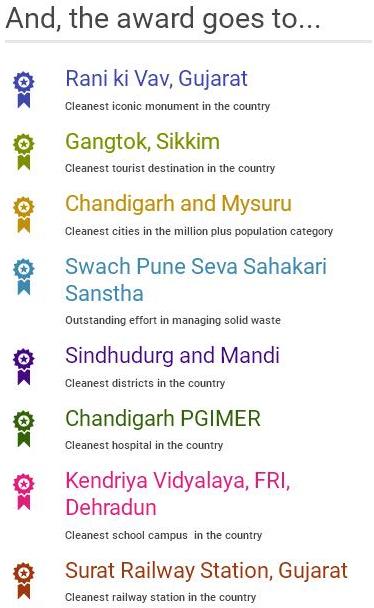
“Like 'Satyagraha' freed the country from colonialism, 'Swachhagraha' would free the country from dirt” – Prime Minister Narendra Modi
With the current National Democratic Alliance (NDA) regime in its third year in office, one of its most ambitious projects, the Swachh Bharat Mission, completes two full years in operation. The mission set the year 2019 as the deadline to completely eliminate open defecation from all parts of the country.
To achieve this lofty goal, building of sanitary latrines was seen as imperative. The government has been systematically encouraging panchayats and municipalities alike to speed up the construction of individual and community toilets through subsidy and targeted behaviour change interventions.
The mission was split into two components, rural and urban, managed by the Ministry of Drinking Water and Sanitation and the Ministry of Urban Development (MoUD) respectively. The MoUD envisioned the construction of 1.04 crore individual household toilets in urban centres, in addition to over five lakh community and public toilet seats across 4,041 statutory towns in the country.
Applauding Swachh Bharat progress
The annual India Sanitation Conference (INDOSAN) held at the Vigyan Bhavan in Delhi ahead of this Gandhi Jayanti brought together government officials, researchers, non-governmental organisations and academicians working to improve sanitation and hygiene in the country. Organisations, district administrations and schools were felicitated for their exceptional performance in achieving the mission’s targets.

Gujarat’s 900-year old Solanki stepwell, Rani ki Vav, has been declared the ‘cleanest iconic monument’ in the country. Constructed by queen Udayamati in memory of her late husband king Bhimdev I on the banks of the river Saraswati, the stepwell got inscribed in the UNESCO world heritage list in June 2014.
Sikkim’s capital Gangtok has been recognised as the 'cleanest tourist destination' by the union tourism ministry.
The cities of Chandigarh and Mysuru were recognised as ‘clean cities in million plus population category’. Both cities also topped the 2016 Swachh Survekshna survey in which 73 cities across the country were ranked based on overall cleanliness and hygiene.
Solid waste co-operative SWaCH Pune Seva Sahakari Sanstha, which puts rag pickers at the top of the solid waste management pyramid, was felicitated along with the Pune municipal corporation. The waste pickers cooperative has effectively reduced the quantum of garbage entering the city landfills through painstaking waste segregation and recycling.
Maharashtra’s Sindhudurg and Himachal Pradesh’s Mandi were adjudged the ‘cleanest districts’ in the country. With a score of 98.4, Mandi topped the hills category while Sindhudurg finished first in the plains division with an overall cleanliness score of 96.8 in the recently concluded Swachh Survekshan.
Chandigarh’s Post Graduate Institute of Medical Education and Research (PGIMER) was named the ‘cleanest hospital in the country’. The institute was earlier presented with the National Kayakalp Award for top notch hygiene maintenance in a government hospital. The union government’s Kayakalp programme focuses on infection control, together with cleanliness and hygiene promotion, in public healthcare facilities.
The Kendriya Vidyalaya in Dehradun’s Forest Research Institute has been adjudged the ‘cleanest school campus’ in the country. The school, with its several initiatives to inculcate cleanliness and hygiene among its students, is expected to serve as a model for other educational institutions to follow. Besides being a ‘polythene-free zone’, the school had imposed a ‘green fine’ where students had to plant a sapling in the campus every time they came late to school.
The National Cadet Corps (NCC) was felicitated for its efforts in ensuring a clean India during the conference.
Surat railway station was adjudged the ‘cleanest railway station’ in the country.
Despite the positive picture painted by the government at high-profile celebrations and prominent jubilees, the overall status of sanitation in India continues to be disquieting. A recently released report on the functioning of the Swachh Bharat Mission by Down to Earth (Hindi) magazine has revealed that the target of ‘a toilet in every house’ may not be a reality by 2019. The analysis indicates that the overall progress has been rather slow. For example, in the prime minister’s constituency of Varanasi, less than 8,000 toilets were constructed in the last two years against the set target of over two lakh units.
Similar shortfalls have been observed in other cities as well. Just 5,332 new toilets were constructed in Lucknow out of the overall target of building 1,86,177 latrines by 2019. At this rate, the analysis records that the dream of a Swachh Bharat can be realised only decades later and nowhere in the immediate future.
Lead image courtesy: Swachh Bharat